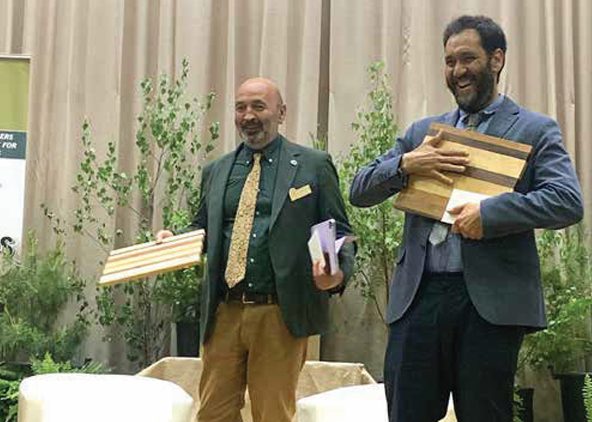Small private forest owners face similar challenges across the globe: fragmented properties, low profitability, limited management, and increasing pressure from climate change. At the recent Ontario Woodlot Association Conference, the European perspective offered valuable insights—especially through the work of SMURF (Sustainable Management models and valUe chains foR small Forests), an EU-funded project presented by Pablo Sabín, Forest Engineer and CEO of Cesefor.
His message was straightforward: forests must be profitable to be sustainable. And SMURF is working to make that a reality for millions of small forest owners across Europe.
Understanding the Challenge: Fragmented Forests and Low Incentives
Europe counts over 60 million private forest owners, many of whom hold parcels smaller than 0.5 hectares. This extreme fragmentation makes coordinated management difficult and cuts off access to markets. As a result, income from forests is often so low that owners do not see them as an economic asset—reducing the motivation to invest in long-term stewardship.
SMURF aims to change this dynamic by creating the conditions for active, profitable, and sustainable forest management.
How SMURF Is Driving Change
1. A European classification system for forest holdings
SMURF is proposing a harmonized EU-wide system to recognize and define small forest properties, highlighting their role in achieving sustainability and climate goals.
2. Mapping needs across all 27 EU Member States
Through surveys and benchmarking of support systems, the project is gathering comprehensive knowledge on what small forest owners need to overcome barriers to management.
3. Building collaboration networks
SMURF is connecting owners, managers, cooperatives, and policymakers to develop joint solutions. This effort materialized in the first European conference on small forest holdings, held in May 2025, where more than 40 organizations committed to participate in pilot actions.
4. Driving innovation in fragmented forests
The project blends traditional forest knowledge with new technologies and business models to improve sustainability and profitability.
Key approaches include:
Closer-to-Nature Silviculture (CNS): promoting biodiversity, long-term forest health, and low-impact management.
Carbon and afforestation projects: aligning with new EU frameworks to generate payments for ecosystem services.
New value chains: exploring innovative ways to diversify forest income beyond timber.
Profitability as a Pathway to Sustainability
Sabín emphasized a critical point: economic viability is essential for sustainable forest management. When owners can generate income through ecosystem services, certification, CNS, or carbon markets, they are far more likely to actively care for their forests.
Profitability also attracts political attention, public support, and long-term investment—creating a positive cycle that benefits ecosystems, local communities, and the wider climate agenda.
A Model with Global Relevance
The European experience shared at the conference shows that the issues faced by small forest owners—whether in the Mediterranean, Ontario, or elsewhere—are deeply interconnected. The strategies promoted by SMURF provide a roadmap for turning fragmented, inactive forests into valuable, resilient landscapes.
With the right tools, partnerships, and incentives, even the smallest woodlot can contribute to biodiversity, climate resilience, and rural vitality.
Read the original article for more insights into the presentations by Toni Ventre and Pablo Sabín Here


